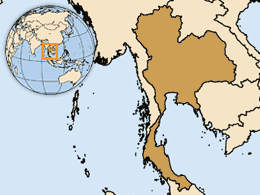Considerations for decision-making
Chapter 2 of WHO’s Principles and considerations for adding a vaccine to a national immunization programme: from decision to implementation and monitoring outlines the general decision-making process. Considerations specific to maternal influenza vaccination are provided in the following sections of the present manual. Complementing this section, Annex 3 includes a checklist specifically relating to the decision to introduce maternal influenza vaccination.
Thailand – considerations to support decision-making on introducing influenza vaccination for pregnant women

Thailand introduced influenza vaccine for high-risk target groups in 2008 following preparedness planning discussions on pandemic influenza in relation to the occurrence of H5N1 avian influenza in 2004. The vaccination target groups included pregnant women, older persons, children aged 6 months to 2 years, and persons with chronic medical conditions.The programme was implemented within the national immunization programme, using established decision-making processes and mechanisms involving the NITAG. The aims of the influenza vaccination programme were to reduce the health burden from seasonal influenza, to simultaneously create demand to sustain vaccine production capacity, and to maintain public acceptance of influenza vaccine.
Apart from disease burden considerations, the decision-making process included a cost-benefit and cost-effectiveness analysis of the planned programme. This resulted in a proposal on influenza vaccine capacity investments which was presented to the government. The decision-making process also included an assessment of the financial capacity and strengths of the existing immunization programme. The programme was deemed manageable under the universal health coverage budget (for influenza vaccination) and the revenue of the Government Pharmaceutical Organization (for influenza vaccine production). Measurement of the strength of the national immunization programme for the introduction of influenza vaccine included assessment of the system for vaccine delivery, vaccine logistics, training and supervision, public communication, programme monitoring and evaluation.
Source: Dr Supamit Chunsuttiwat, Department of Disease Control, Ministry of Public Health, Thailand.
